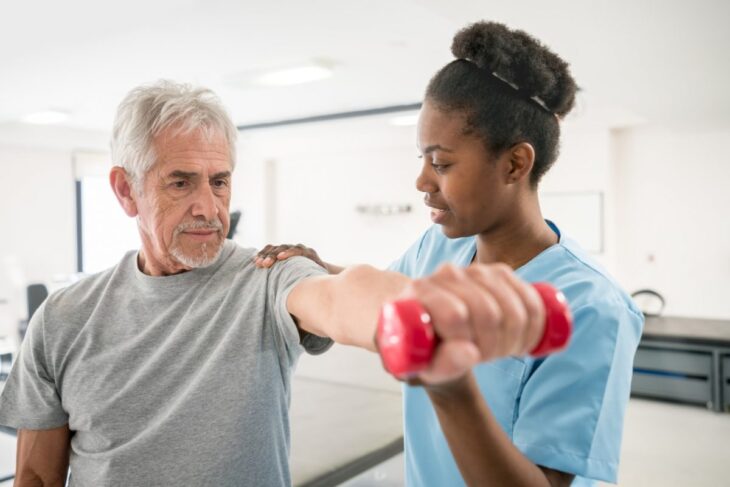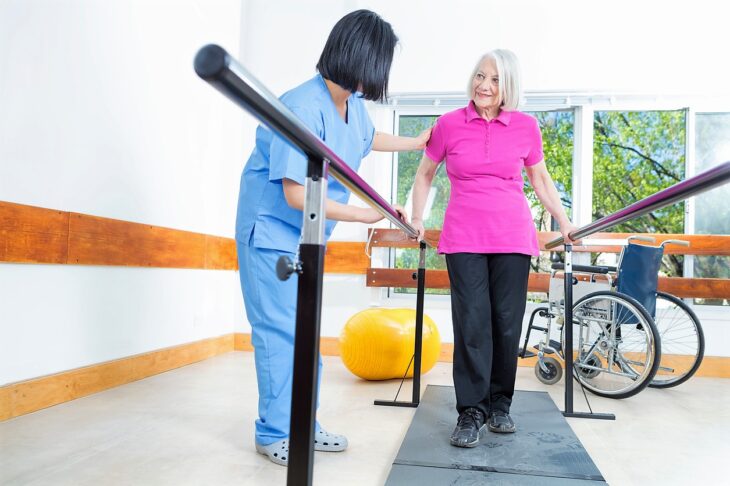Physical therapy is essential for those who suffer from certain illnesses and conditions which may reduce mobility or cause chronic pain.
Contents
What actually is physical therapy?

Source: Verywell Health
We all know that chronic pain at any age and due to any circumstance can have a severely negative impact on a person’s health – not only physical but also mental. Physical therapy is a way to attempt to ease or sometimes treat pain caused by particular medical conditions or injuries. It can also be used as a preventative measure to slow certain ailments from deteriorating can also be used to help prevent injuries in advance. This is especially important for people such as professional athletes, who have a higher risk of sustaining injuries, some of which can often be career-ending. Check in with your local wellness center as lots of places offer physical therapy.
A physical therapist will assess and examine a patient to determine what form their physical therapy will take, and which exercises will best suit for their current needs. Most physical therapy aims to rehabilitate through the form of exercises, which will often involve a hands-on form of treatment to directly aid in the regeneration of muscles.
Which ailments can physical therapy help to ease symptoms of?

Source: Coastal Orthopedics
Many ailments and injuries can be relieved by physical therapy. These sorts of pains can affect anyone, whether they stem from age-related issues such as arthritis, injuries sustained from playing a sport or any chronic illness which can have a debilitating effect on someone’s life. While physical therapy will not necessarily completely cure and solve issues faced, it can help to rehabilitate and restore, which is a vital first step. Here are a few examples of the kinds of issues that can be helped by physical therapy.
When first thinking of physical therapy, the first ailment that comes to mind is an injury sustained when playing sport. These most commonly include sprains, knee injuries, tennis elbow and torn ligaments. Physical therapy can sometimes help patients avoid surgery by rehabilitating and strengthening, meaning athletes can cut out the recovery time and get back to their sport as soon as possible. Care can include muscle therapy, acupuncture, and massage, as well as chiropractic care.
Unfortunately, many people in the U.S. suffer from conditions such as herniated discs every year. While oftentimes incredibly painful and uncomfortable to deal with, physical therapy can help ease some of the symptoms and will often suffice alone without surgery! In such instances, it is also known that herniated discs can often lead to sciatica, which affects the sciatic nerve causing radiating pain that can travel down the legs. It is then possible that through customized physical therapy to help treat and soothe herniated discs, you are also able to prevent further damage, such as sciatica.

Source: Alliance Physical Therapy Partners
Treatment will often include exercises targeted at strengthening the muscles and improving form and posture through specifically considered weight exercises. Hydrotherapy is also a useful exercise used in such rehabilitation. Click here for more information.
Women, specifically, deal with different concerns that can sometimes be helped by physical therapy. Pregnancy and birth puts a significant amount of pressure on the body, and physical therapy can be useful both during pregnancy and post-partum care. Muscles in the pelvic floor can especially benefit from physical therapy as they become weakened during the process, which when not strengthened, can lead to incontinence and pain in the bladder and back area. The abdominal muscles will also benefit from physical therapy, as they can sometimes become over stretched in pregnancy, so exercises targeting these areas will be useful to new parents getting back on their feet postpartum.
It is important to note that while physical therapy can certainly help relieve pain and strengthen areas of the body that are suffering, it does not completely replace a doctor in severe cases, and should always complement and work alongside other treatments.
What To Expect From An Appointment

Source: Manchester Specialty Programs
Still unsure of what to expect during your first physical therapy meeting? A good physical therapist will first assess and examine to see in which part of the body the problems lie. They should also listen to your concerns and how you hope to be helped. After all, everyone is different, and one set of exercises that worked for someone else with similar issues similar, may not work for you.
After the first examination, you should have a personalized plan of how best to proceed, based on factors such as the cause of your pain, your age, flexibility, posture and more. Exercises will be tailored to you so that you can make the most of your physical therapy appointments and will usually need to be maintained at home.
The length of time you will need to keep up your physical therapy will, of course, depend on the reasons as why you have sought out physical therapy. Someone recovering from surgery, for example, will typically need to maintain their physical therapy plan for a shorter period of time than someone hoping to find relief for chronic pains and illness.
Conclusion

Source: Bethesda Health Group
Physical therapy offers a whole host of benefits for a wide variety of people who may be suffering from a range of issues, be that a chronic illness or perhaps a sports injury. Due to physical therapy being able to benefit such a scope of issues, it cannot be one size fits all, meaning that depending on your condition, your physical therapy plan of action will not be the same as someone suffering from something different. In fact, suffering from the same condition as someone else does not guarantee you will need the same treatment!
Lastly, physical therapy will not always treat you on its own. While an essential part of treatment in the process of helping relieve pain, a physical therapist does not take the place of a doctor in more serious cases, and should work in conjunction to assist and ensure you get the most rounded form of care.
